Wednesday December 28, 2022
By admin
Nikon has quietly added to its growing range of full-frame mirrorless cameras in recent years, perhaps just at a slower pace than in the past. In the last few years we’ve seen refreshes of its founding Z-series cameras in the form of the Nikon Z6 II and Nikon Z7 II. We also saw Nikon challenge the Canon EOS RP for the entry-level full-frame crown with the Nikon Z5 and the foundation of its range of mirrorless APS-C offerings with the Nikon Z30 and Nikon Z50. But as we enter 2025 all the focus will be on the powerful new Nikon Z9.
The company’s new flagship full-frame mirrorless camera looks to set a new market standard and re-establish Nikon’s brand as the go-to system for professionals. But even if you’re not in the market for a flagship professional-level camera, there’s something for every type and level of photographer within Nikon’s Z series mirrorless cameras and existing DSLR range.
So with that in mind, let’s take a look at our picks for the best Nikon cameras for various popular subjects. But first, let’s answer some of the common questions people ask about Nikon’s camera systems.
Which Nikon cameras are full frame?
Nikon’s full-frame cameras sit in both its range of DSLR and mirrorless Z series cameras. The flagship Nikon D6, professional Nikon D850, advanced enthusiast Nikon D780 and entry-level Nikon D610 round out Nikon’s FX range of full-frame DSLRs.
In the Z series mirrorless cameras, the Nikon Z9, Nikon Z6 II, Nikon Z7 II, Nikon Z5 and the original Nikon Z6 and Nikon Z7 are all full-frame options.
Which Nikon cameras have WiFi?
- Nikon Z9
- Nikon Z7 II
- Nikon Z6 II
- Nikon Z6
- Nikon Z7
- Nikon Z5
- Nikon D6
- Nikon D850
- Nikon D780
- Nikon D500
- Nikon D7500
Many Nikon cameras come with built-in WiFi, which lets you transfer images from your camera without a physical connection or needing to remove the memory card. Nikon’s SnapBridge app utilises this connection and transfers your images directly from your camera to your phone or smart device.
Nikon cameras with WiFi include the Z9, Z7 II, Z6 II, Z7, Z6, Z5, D6, D850, D780, D500 and D7500.
The best Nikon cameras you can buy today
All of the options on our list of the best Nikon cameras were based on our experience testing them. For a deeper dive into the many different camera types and features available, check out our range of camera buying guides.
Best Nikon camera for beginners
It may be a DSLR, but from its modest price point to its excellent Guide Mode, the Nikon D3500 is hands-down the best Nikon camera for beginners.
For a more in-depth look at Nikon’s entry-level range, check out our guide to the best Nikon cameras for beginners.
Specification
-
Camera type: Mirrorless
-
Announced: 29th June 2022
-
Sensor: 20.88Mp APS-C / DX (23.5x15.7mm) CMOS
-
Processing engine: Expeed 6
-
Lens mount: Nikon Z mount
-
Sensitivity range: Stills: ISO 100-51,200; expands to 204,800, Video: ISO 100-25,600
-
Viewfinder: N/A
-
Screen: Vari-angle 3–inch 1,040,000-dot touchscreen
-
Autofocus: Hybrid (phase and contrast detection) AF with 209 AF points, Eye AF for humans and animals
-
Continuous Shooting: 11fps with continuous AF and exposure metering
-
Video: 4K at 30fps and Full-HD at 120fps
-
Storage: SD/SDHC/SDXC UHS-I
-
Connectivity: Snapbridge, Wi-Fi, Bluetooth
-
Dimensions (W x H x D): 128 x 73.5 x 59.5mm
-
Weight: 405g with battery and memory card
The Nikon Z30 is Nikon’s best mirrorless option for beginners. The APS-C, or DX-format, camera boasts a 20.88MP sensor. This is paired with Nikon’s Expeed 6 processor, which enables a sensitivity range that starts at ISO 100 and goes up to ISO 25,600 for video or 51,200 for stills (with expansion settings of ISO 102,400 and 204,800).
Stills shooters can capture images at up to 11fps with full autofocus and metering capability, and you can shoot video at up to 4K (3840 x 2160) resolution at up to 30p or Full HD (1920 x 1080) at up to 120p.
Paired with an impressive AF system, the Nikon Z30 is a capable little camera that produces nice-quality images and video.
Price when reviewed
£699
$699 Check current price
For
- Excellent build quality
- Vari-angle touch-screen
- Nice image quality
Specification
-
Camera type: APS-C (DX) format DSLR
-
Announced: 30th August 2018
-
Lens mount: Nikon F
-
Sensor: 24.2Mp APS-C (23.5 x 15.6mm)
-
Sensitivity range: ISO 100-25,600
-
Autofocus system: Viewfinder: 11-point with 1 cross-type, Live View: Contrast detection
-
Maximum continuous shooting rate: 5fps (frames per second)
-
Viewfinder: Optical with pentamirror 95% coverage
-
Screen: 3-inch TFT LCD with 921,000 dots
-
Storage: SD/SDHC/SDXC UHS-I
-
Dimensions: 124 x 97 x 69.5mm
-
Weight: 365g body only
For years, Nikon’s D3XXX series of cameras has been our recommendation for anyone looking for their first DSLR. Having replaced the D3400 in August 2018, the Nikon D3500 is the most recent model in the line8. While it has a very similar specification as the camera it replaced, the D3500’s APS-C format 24.2Mp sensor is newer (although it has the same effective pixel count as the previous chip). In addition, it’s a little lighter than the D3400 and its battery lasts for a few more shots. Nikon has also tweaked its design a bit in comparison with the D3400.
Thanks to its 24Mp APS-C format sensor and Expeed 4 processing engine, the D3500 is capable of capturing detail-rich images. What makes especially suited to novice photographers, however, is its Guide Mode that explains how to take control of the camera in simple language.
SnapBridge is also integrated to simplify sharing images direct from the camera.
Price when reviewed
£479
$596 Check current price
For
- Excellent 24Mp APS-C format sensor
- Superb guide mode that teaches you about photography
- Compatible with an extensive range of lenses and accessories
Best Nikon camera for professionals
The Nikon D5 is a phenomenal DSLR and it’s not really surprising that the D6 only makes a few improvements upon it. Despite being more of a refresh, the flagship D6 is the best Nikon camera for professional photographers.
And while units haven’t yet shipped, we’ve tested the Nikon Z9 and it’s an absolute beast and game-changer. For a more in-depth look at all of Nikon’s pro options, check out our guide to the best Nikon cameras for professional photography.
Specification
-
Camera type: DSLR
-
Announced: 12th February 2020
-
Sensor: 20.8Mp full-frame (35.9 x 23.9mm) CMOS
-
Lens mount: Nikon F
-
Processing engine: Expeed 6
-
Viewfinder: Eye-level pentaprism with 100% coverage, 0.72x magnification (with 50 mm f/1.4 lens at infinity, -1.0 m-¹), 17mm eye-point and -3 to +1 m-¹ diopter adjustment
-
Screen: Fixed 3.2–inch 2359k-dot TFT touch-sensitive LCD
-
Sensitivity: ISO 100 to 102,400, expandable to ISO 50-3,280,000
-
Continuous shooting: Up to 14 fps, Continuous Low: 1 to 10 fps, Continuous High: 10 to 14 fps, Quiet: 1 to 5 fps
-
Shutter speed: 1/8000 to 30sec, Bulb; Time; X250
-
Autofocus system: Viewfinder: TTL phase-detection with 105 focus points, all cross-type, 15 at f/8, Live view: Contrast-detect AF, focus point selected by camera when face detection or subject-tracking is used.
-
AF-area mode: Viewfinder: Single-point AF; 9-, 25-, 49-, or 105- point dynamic-area AF; 3D-tracking; group-area AF; group-area AF (C1); group-area AF (C2); auto-area AF, Live view: Face-detection AF, wide-area AF, normal-area AF, subject-tracking AF
-
Video resolutions: 3840 x 2160 (4K UHD); 30p (progressive), 25p, 24p, 1920 x 1080; 60p, 50p, 30p, 25p, 24p, 1280 x 720: 60p, 50p, 1920 x 1080 crop: 60p, 50p, 30p, 25p, 24p¹; Actual frame rates for 60p, 50p, 30p, 25p, and 24p are 59.94, 50, 29.97, 25, and 23.976 fps respectively
-
Storage: Dual CFexpress (Type B) and XQD memory cards
-
Connectivity: USB-C, HDMI Type C, 3.5mm mic port, 3.5mm headphone port, Wi-Fi, Bluetooth
-
Battery: One EN-EL18c rechargeable Li-ion battery
-
Dimensions (W x H x D): 160 x 163 x 92mm / 6.3 x 6.5 x 3.7inches
-
Weight: 1450g / 3 lb. 3.2 oz. with battery and two CFexpress cards, 1270 g / 2 lb. 12.8 oz. body only
If you’re a professional photographer and you need a solid, dependable camera that has fast responses, can cope with low light and delivers sharp images in a wide range of conditions, then the Nikon D6 is a great choice.
The Nikon D6 is the replacement for the D5, Nikon’s flagship DSLR which is aimed at professional news and sports photographers. It represents the pinnacle of DSLR development, competing with the Canon EOS-1D X Mark III.
The D6 is designed to be used every day in the harshest of environments by photographers who need a fast, reliable camera. It’s a full-frame model, which means its 20.8Mp sensor has the same dimensions as a 35mm film frame.
The Nikon D5 it replaces is a robust and reliable workhorse of a camera that has served many professional photographers well. While the D6 doesn’t make a huge step forward in terms of specification or handling, it does enough to make professional sports and news photographers stick with a DSLR rather than switch to a mirrorless camera.
It has the start-up and response times that news and event photographers need, plus its AF system is capable of getting fast-moving subjects sharp – even in gloomy conditions.
Professional photographers are likely to find the changes made to the viewfinder-based autofocus (AF) system the most significant. In fact, the D6 has Nikon’s most advanced AF system to date.
Price when reviewed
£6299
$6496.95 Check current price
For
- 14fps shooting with continuous focusing
- Superb AF system for use with the viewfinder
- Great low-light performance
Specification
-
Camera type: Full-frame mirrorless camera
-
Announced: 28th October 2021
-
Lens mount: Nikon Z
-
Sensor: Full-frame (FX 35.9 x 23.9mm) 45.7MP stacked backside illuminated (BSI) sensor
-
Processing engine: Expeed 7
-
Stabilisation: 5-axis sensor shift giving 6EV shutter speed compensation
-
Sensitivity: ISO 64-25,600, expandable to ISO 32-102,400
-
Maximum continuous shooting rate: 20fps for up to 1000+ raw (high efficiency) files or 685 raw (high efficiency *) files, 30fps for up to 1000+ normal-quality Jpegs, or 120fps normal-quality 11Mp Jpegs
-
Autofocus system: Hybrid with phase and contrast detection
-
Phase detection points: 493
-
AF-area modes: Pinpoint (available in photo mode only), single-point, dynamic-area (S, M, and L; available in photo mode only), wide-area (S and L), and auto-area AF, 3D-tracking (available in photo mode only), subject-tracking AF (available in video mode only)
-
Video resolution: 8K (7680 x 4320): 30p (progressive)/25p/24p, 4K (3840 x 2160): 120p/100p/60p/50p/30p/25p/24p, Full HD (1920 x 1080): 120p/100p/60p/50p/30p/25p/24p
-
Video file format: MOV, MP4
-
Video compression: Apple ProRes 422 HQ (10 bit), H.265/HEVC (8 bit/10 bit), H.264/AVC (8 bit)
-
Viewfinder: 0.5-inch 3.69-million-dot, 3,000-nit OLED viewfinder
-
Screen: 3.2-inch 2,100,000-dot 4-way-tilting touch-screen
-
Storage: Dual XQD/CFexpress
-
Dimensions (W x H x D): 149 x 149.5 x 90.5 mm / 5.9 x 5.9 x 3.6 inches
-
Weight: 1340 g / 2 lb. 15.3 oz.with battery and memory card but without body cap and accessory shoe cover, Body only: 1160g / 2 lb. 9 oz.
The Nikon Z9 offers just about everything professional and enthusiast photographers might want from a camera and put it into a relatively compact (yet twin-gripped) weather-sealed body. A resolution of 45.7Mp promises to capture a high level of detail without over-stretching the camera’s noise control.
There’s also 20fps full-resolution shooting for raw files, 30fps for Jpegs and 120fps shooting at 11Mp, paired with what looks like an excellent AF system with super-sticky Eye-detection.
The Nikon Z9 offers just about everything professional and enthusiast photographers might want from a camera.
The Nikon Z9 goes beyond what’s offered by the Nikon D6 while at £5,299/€6,299 it costs around £1,000 less and offers stiff competition to the Sony A1 and Canon EOS R3.
Price when reviewed
£5299
€6299 Check current price
For
- New 45.7Mp full-frame sensor sensor
- Advanced AF system
- Durable, weatherproof build
Best Nikon camera for wildlife photography
While its 45.7Mp sensor ensures plenty of detail is captured, the maximum shooting rate of 7fps, which can be boosted to 9fps with the optional battery-grip, plus the superb 153-point AF system make the D850 the best Nikon camera for wildlife photography.
Specification
-
Camera type: Full-frame (FX) DSLR
-
Announced: 24th August 2017
-
Lens mount: Nikon F
-
Sensor: 45.7Mp full-frame (35.9 x 23.9mm) backside-illuminated CMOS
-
Maximum continuous shooting rate: 7fps as standard, 9fps with the optional MB-D18 Multi-Power Battery Pack for up to 51 14-bit lossless compressed raw files or 170 12-bit lossless compressed raw files
-
Autofocus system: Viewfinder: Multi-CAM 20K autofocus sensor 153 focus points (including 99 cross-type sensors and 15 sensors that support f/8), of which 55 (35 cross-type sensors and 9 f/8 sensors) are available for selection, Live view: Contrast detection
-
Viewfinder: Optical pentaprism type
-
Screen: Tilting, touch-sensitive 3.2-inch TFT LCD with 2,359,000 dots
-
Dimensions: 146×124×78.5mm / 5.8×4.9×3.1inches
-
Weight: 1,005g / 2lb 3.5oz with battery and XQD memory card but without body cap, 915g /2lb 0.3oz camera body only
The Nikon D850 is arguably the best DSLR that has ever been made. It combines a 45.7Mp full-frame sensor with continuous shooting at up to 9fps with the optional MB-D18 Multi-Power Battery Pack. Even without the battery pack, it can shoot at 7fps and both rates can be maintained for up to 51 14-bit lossless compressed raw files or 170 12-bit lossless compressed raw files.
When the viewfinder is in action there’s also a superb 153-point AF system with 99 cross-type sensors and 15 sensors that support f/8).
As the D850 has a backside-illuminated sensor and the microlenses are gapless the pixels have the maximum opportunity to gather light. This and the Expeed 5 processing engine has enabled Nikon to give the camera a standard sensitivity range of ISO 64-25,600. There are also expansion settings that extend the range to the equivalent of ISO 32-102,400, but we recommend staying with the native range.
It’s proved an incredibly popular DSLR with photographers who appreciate its ability to combine a high pixel count with speed and excellent low-light performance.
Price when reviewed
£3500
$3296.95 Check current price
Best Nikon camera for vlogging
Thanks to its impeccable design and and video features, the APS-C Nikon Z50 is the best Nikon camera for vlogging.
Specification
-
Camera type: Mirrorless
-
Sensor: 20.88Mp APS-C / DX (23.5x15.7mm) CMOS
-
Processing engine: Expeed 6
-
Lens mount: Nikon Z mount
-
Sensitivity range: ISO 100-51,200; expands to 204,800
-
Viewfinder: 0.39-inch 2,360,000-dot OLED electronic viewfinder
-
Screen: Tilting 3.2–inch 1,040,000-dot touchscreen
-
Autofocus: Hybrid (phase and contrast detection) AF with 209 AF points, Eye AF and Subject Tracking. Firmware V.20 adds Eye-detection AF for Animals as well as humans
-
Continuous Shooting: 11fps with continuous AF and exposure metering
-
Video: 4K at 30fps and Full-HD at 120fps
-
Storage: SD/SDHC/SDXC UHS-I
-
Connectivity: Snapbridge 2.6; Wi-Fi, Bluetooth
-
Dimensions (W x H x D): 126.5 x 93.5 x 60 mm / 5 x 3.7 x 2.4-inches
-
Weight: 450g / 15.9oz with battery and memory card but without body cap, 395g /14oz body only
The Nikon Z50 has some great advantages as a result of its mirrorless design. The 2.36-million-dot electronic viewfinder, for example, can show the image as it will be captured, complete with any exposure, white balance and Picture Control settings applied. And you can switch seamlessly from shooting using the viewfinder to using the 3.2-inch screen.
Further good news is that the 209-point autofocus system, which uses phase detection, is excellent even in low light. You’ll have no problem shooting sport or action with it.
But if you’re getting into video, or thinking about it, you can also shoot 4K video at up to 30fps, and there’s a mic port to connect an external microphone. You can also shoot Full HD footage at up to 120fps, which means you can really slow down action if you want to add a bit of drama.
Nikon’s SnapBridge technology is also built in and it does a great job of firing low-resolution copies of your images to a paired phone. It’s amazing how useful that is.
What’s more, Nikon now sells a Vlogger Kit for the Z50, which includes the the Z50 and 16-50mm lens, a SmallRig Vlogging Mounting Plate for Nikon Z50 Camera LCN2525, a Rode VideoMicro microphone and a Manfrotto Pixi mini tripod.
Price when reviewed
£849
$989 Check current price
For
- Superb build and handling
- AF fast and accurate in low light
- Weatherproof
Best Nikon camera for landscape photography
The Nikon Z7 II and its 45.7-million-pixel sensor make it the best Nikon camera for landscape photographers and a sure bet to entice more DSLR photographers into mirrorless full-frame photography.
Specification
-
Camera type: Full-frame mirrorless camera
-
Announced: 14th October 2020
-
Lens mount: Nikon Z
-
Sensor: Full-frame (FX 35.9 x 23.9mm) 45.7MP backside illuminated (BSI) sensor
-
Processing engine: Dual Expeed 6
-
Stabilisation: 5-axis in-body VR
-
Sensitivity: ISO 64-25,600, expandable to ISO 32-102,400
-
Maximum continuous shooting rate: 10fps for up to 200Jpegs or 77 12-bit uncompressed raw files, 9fps with 14-bit raw files
-
Autofocus system: Hybrid with phase and contrast detection
-
Phase detection points: 493
-
Video resolution: 4K (3840 x 2160) 60/50/30/25/24p, Full-HD (1920 x 1080) 120/100/60/50/30/25/24p, Slow-motion mode 1920 x 1080 30p x4/25p x4/24p
-
Viewfinder: 0.5-inch 3.69-million-dot electronic viewfinder
-
Screen: 3.2-inch 2,100,000-dot tilting touch-screen
-
Storage: Dual slot 1 XQD/CFexpress and 1 SD/SDHC/SDXC
-
Dimensions (W x H x D): 134 x 100.5 x 69.5mm / 5.3 x 4 x 2.8-inches
-
Weight: 705g with battery and memory card but without body cap, 615g body only
Although the Z6 and Z7 were Nikon’s first full-frame mirrorless cameras, and some might argue the company’s first serious mirrorless cameras, they avoided that ‘first generation’ feel. They are both excellent cameras. However, there’s one aspect that many photographers feel is a mistake for a high-end digital camera, they each only have one card slot. Happily, the mark II cameras correct this and the Nikon Z7II has two memory card slots, one that can accept CFexpress or XQD cards and the other that’s designed for SD-type UHS-II media.
By adding a second card slot, the Nikon Z7II corrects the main concern that photographers have about the original Z7. Adding a second Expeed 6 processing engine also boosts the continuous shooting rate, takes 4K shooting to 60P, deepens the burst depth and enhances the low-light capability of the autofocus system. It’s a solid update.
Inside the Nikon Z7II is the same full-frame 45.7MP backside-illuminated (BSI) sensor as is in the original Z7. This is a similar, but not identical sensor to the one that’s in the Nikon D850.
Nikon has paired the Z7II’s sensor with two Expeed 6 processing engines. That’s a first for Nikon, even its flagship DSLR, the Nikon D6, has a single Expeed 6 engine.
The Nikon Z7 II has a high dynamic range which means it can capture a wide range of tones in a single image. That’s good news for images straight from the camera, but it also translates into greater scope for adjusting images post-capture. On those occasions when you might need to reduce the exposure to preserve the brightest highlights, you can do so in the knowledge that the shadows and mid-tones can be brightened in processing.
The Z7 II’s raw files withstand substantial brightening well. In fact, low-ISO images can cope with being brightened by 4 or even 5EV with only a slight increase in the noise level.
Price when reviewed
£2999
€3442 /
$2996.95 Check current price
For
- High-quality sensor
- Excellent user interface and control layout
- Weatherproof build
Best Nikon camera for portraits
An excellent all-rounder, the speedy Nikon Z6 II is the best Nikon camera for portraits, building on the success of the original Z6.
Specification
-
Camera type: Full-frame mirrorless camera
-
Announced: 14th October 2020
-
Lens mount: Nikon Z
-
Sensor: Full-frame (FX 35.9 x 23.9mm) 24.5MP backside illuminated (BSI) sensor
-
Processing engine: Dual Expeed 6
-
Stabilisation: 5-axis in-body VR
-
Sensitivity: ISO 100-51,200, expandable to ISO 50-204,800
-
Maximum continuous shooting rate: 14fps for up to 200Jpegs or 124 12-bit uncompressed raw files
-
Autofocus system: Hybrid with phase and contrast detection
-
Phase detection points: 273
-
Video resolution: 4K (3840 x 2160) 30/25/24p (60P to come with free firmware update in Feb 2021), Full-HD (1920 x 1080) 120/100/60/50/30/25/24p, Slow-motion mode 1920 x 1080 30p x4/25p x4/24p x5
-
Viewfinder: 0.5-inch 3.69-million-dot electronic viewfinder
-
Screen: 3.2-inch 2,100,000-dot tilting touch-screen
-
Storage: Dual slot 1 XQD/CFexpress and 1 SD/SDHC/SDXC
-
Dimensions (W x H x D): 134 x 100.5 x 69.5mm / 5.3 x 4 x 2.8-inches
-
Weight: 705g with battery and memory card but without body cap, 615g body only
Just as the Nikon Z6 is the 24Mp partner to the 45Mp Z7, the Nikon Z6II is the partner to the Z7II. Both are full-frame mirrorless cameras with the Nikon Z mount and they share the majority of features part from the sensor.
As the 24.5Mp camera in the second generation double-act, the Nikon Z6 II is the all-rounder that’s a bit nippier and more affordable than the high-resolution Z7 II. It’s primarily aimed at enthusiast photographers, but it’s also likely to appeal to professional wedding and portrait photographers, who don’t need the larger files sizes brought by the Z7 II.
While Nikon has stuck with the same 24.5Mp backside-illuminated (BSI) CMOS sensor as is in the Z6 for the Z6II, it has added a second Expeed 6 processing engine. That extra power enables the Mark II camera, more correctly known as the Nikon Z 6II, to have a maximum continuous shooting rate of 14fps, 2 fps higher than the Z6. That’s with full autofocus and metering capability and the rate can be maintained for 200 Jpegs or 124 uncompressed 12-Bit raw files.
There’s also the same 273-point hybrid focusing system that uses phase and contrast detection, with points covering 90% of the sensor. However, the tracking and low-light AF performance has been improved. In fact, Nikon claims that the Z6 II can focus down to -6EV with an f/2 or faster lens. That’s roughly equivalent to the light cast by a quarter of the moon.
Also, the human and animal eye AF that was added to the Z6 as a firmware upgrade has been enabled for the Z6 II so that it now operates in video mode. That’s good news for wedding, portrait, lifestyle and wildlife photographers and videographers.
Price when reviewed
£1999
€2262 Check current price
For
- High-quality sensor
- Excellent user interface and control layout
- Weatherproof build

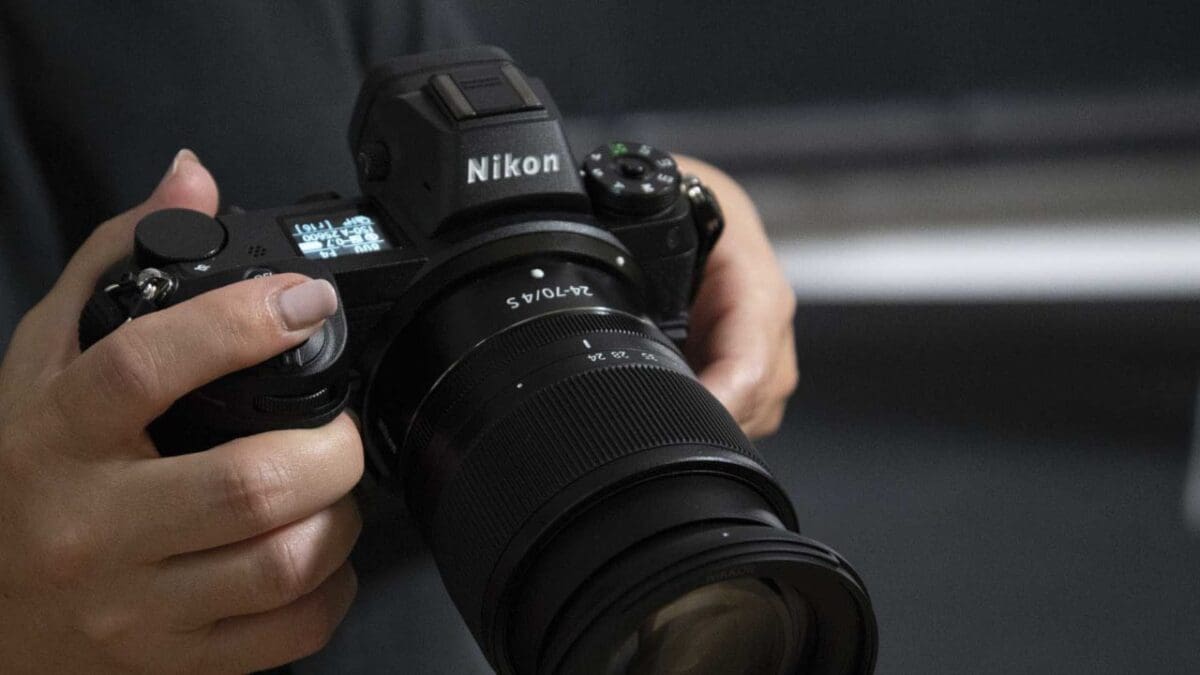



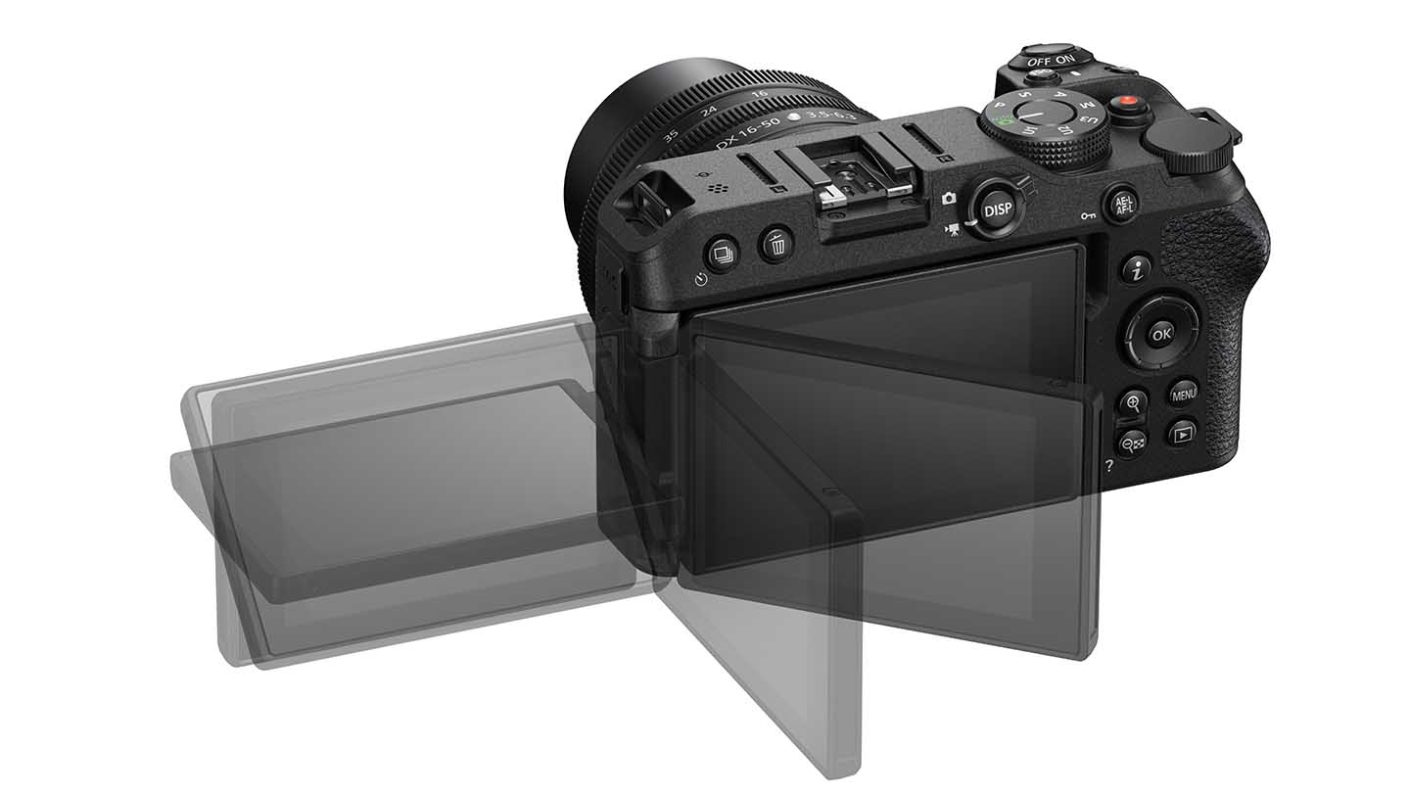
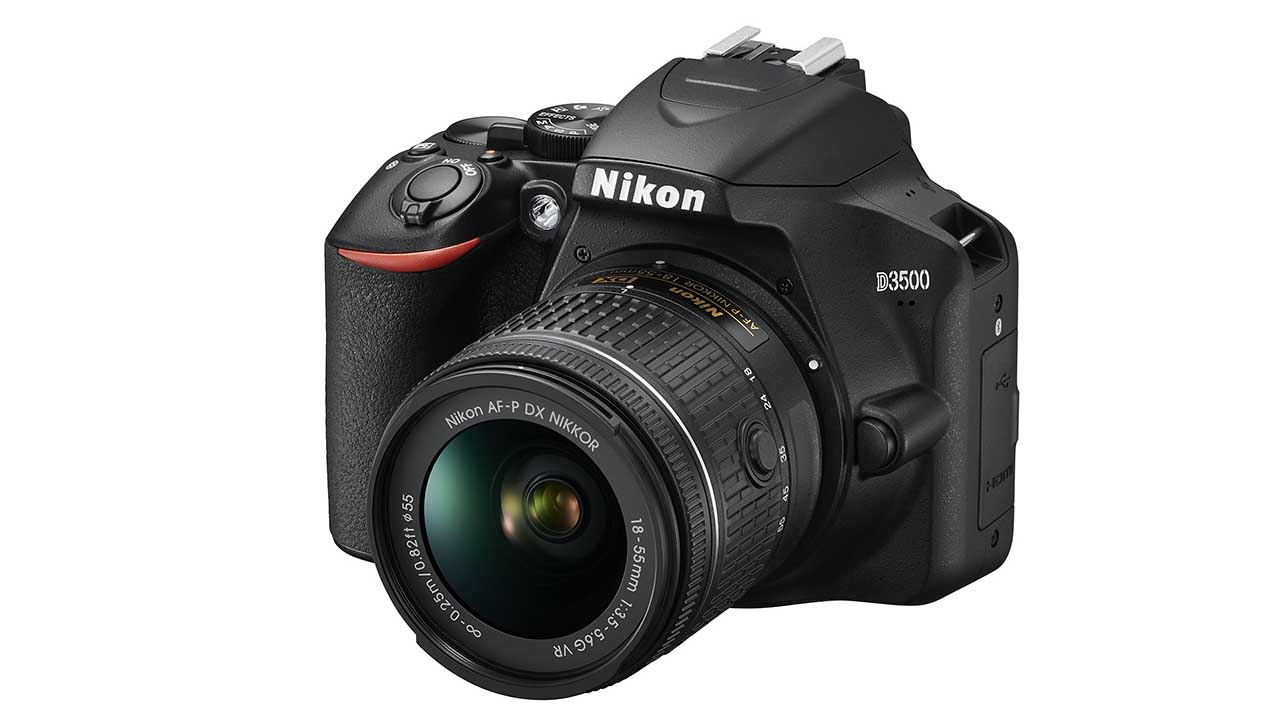
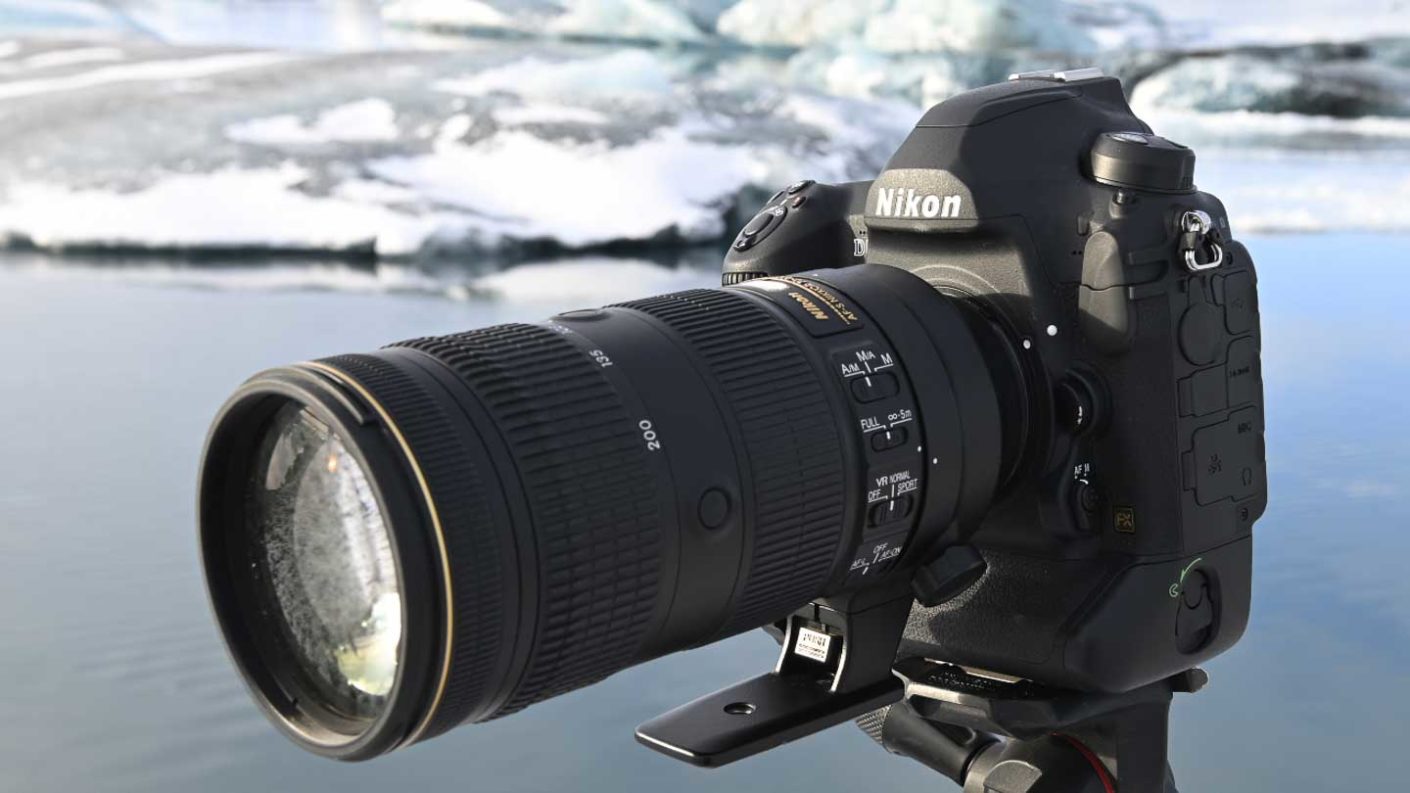
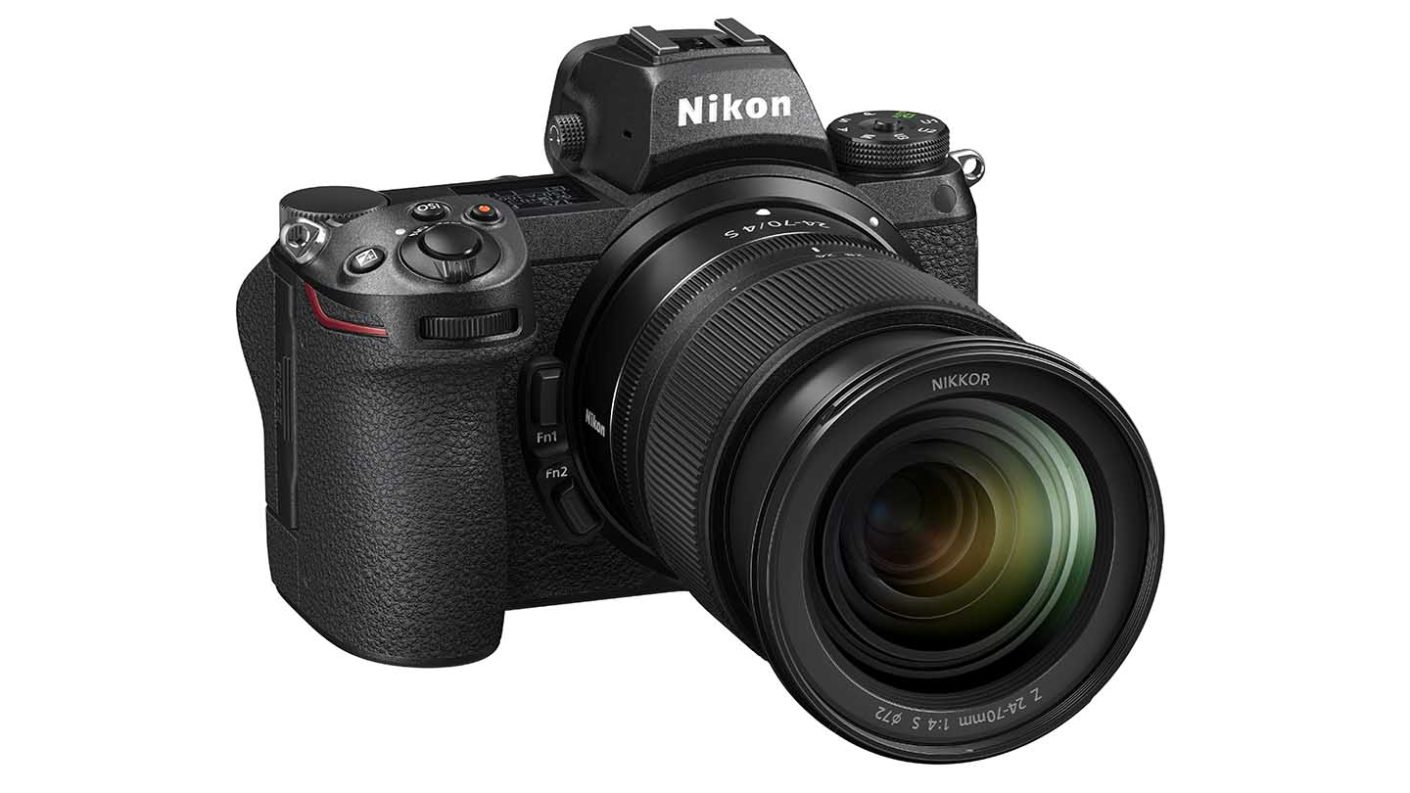
Leave a Reply
You must be logged in to post a comment.